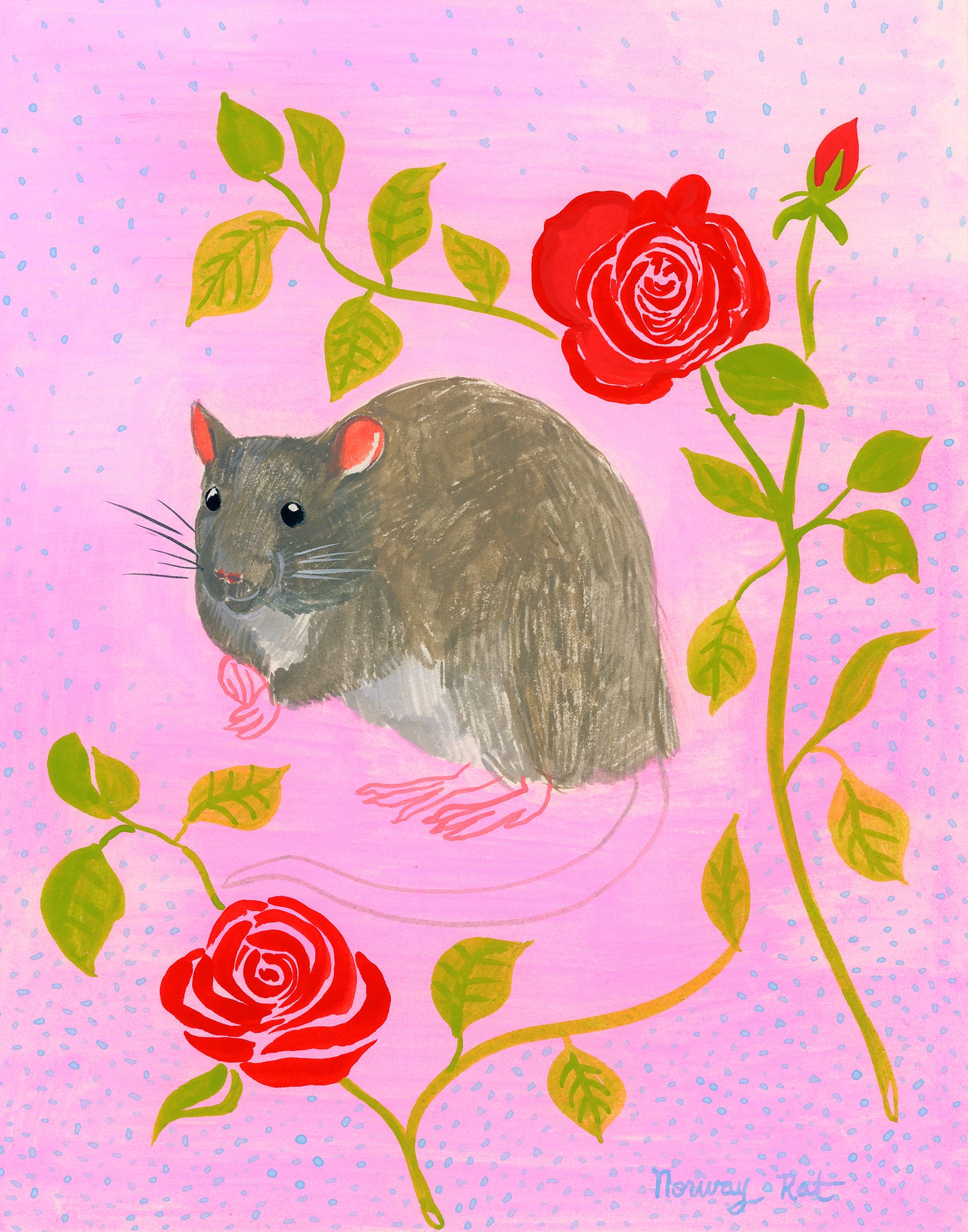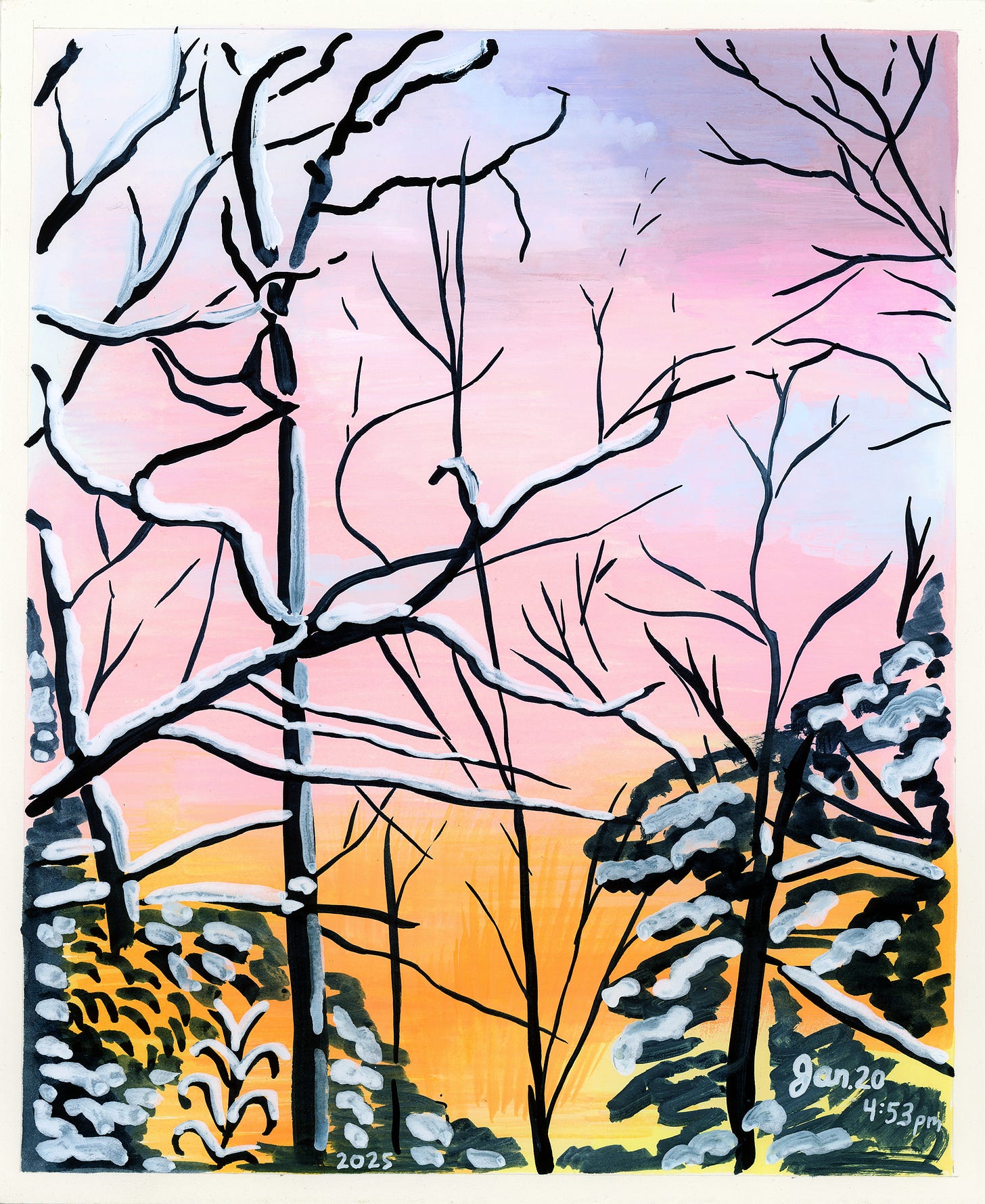Hello, friends — I can’t stop thinking about the study that shows how much rats enjoy driving small cars. My initial reaction was, “Well, of course.” We think a lot of ourselves, but let’s give the keys to the rats and see where they lead us. Please tell me your stories of rats, or other small creatures who are our savvy companions as we hurdle through space and time. — Amy Jean
How many rats have you seen in your life? Only the few along the subway tracks in New York? Or maybe there’s one or more living a little too close, a little too comfortable, near your home. My family and I once saw a rat at a restaurant heading quickly toward the kitchen. It wasn’t Ratatouille. We still ate our meal. Oh, rats! They are our doppelgängers, and, like every hungry apparition watching through the window, we belong to each other.
The brown rat, aka Norway rat, aka Rattus norvegicus, is the rat we all know, common on six contents. The species may have originated in northern China (not Norway, which had lemmings but not rats) and spread around the world with an extra push by the Industrial Revolution. They are a little more aggressive and omnivorous than other small creatures. Apparently they love scrambled eggs and cooked corn but hate raw beets and celery. They are good swimmers, climbers, diggers. They can crawl through holes the size of a quarter. They enjoy being tickled.
Brown rats are social creatures who huddle up in winter, crawling under their friends for warmth. They reproduce at breakneck speed but do not live much longer than a year. They are the only species to have occupied more land than humans.
I’m sure we have our share of rats around the compost bin in our yard, but I’ve never seen one. Our terrier and daily hawks keep them out of sight and underground. I’ve never met one eye to eye. I read there might be 100 million rats in New York City—100 million! If that’s the case, then only seeing one once in awhile along the subway tracks is truly incredible. They are largely invisible.
One study found brown rats possess metacognition, which means they think about their own thoughts—something we thought only humans could do. My favorite book as a kid was Mrs. Frisby and the Rats of NIHM, in which super smart lab rats escape and live under a rose bush. If you know the book (or movie), you may have also kept in mind, for safety’s sake, the lee of the stone. It made a big impression on me. In anxious moments, I’m on the lookout for the lee of the stone. Mrs. Frisby saved her family with the intensity of her love.
I’m not sure if there’s a lee side out there or not, if any small creature’s love is enough, or if the rats in our reflections can teach us anything about being human. But I do know in the depths of winter, we all seek shelter together.
Brown rat links—
“Whether a rat can tickle itself is a question for future research.” [Scientific American]
When given the choice to “either walk or drive to the Froot Loop tree,” they chose to drive, of course! [CNN via YouTube]
Mrs. Frisby and the Rats of NIMH [Bookshop] and the trailer for the animated 1982 movie The Secret of NIMH [YouTube].
Most of my factoids are from Wikipedia, which has a great entry for the brown rat. Wikipedia is the last promise of the old Internet, a version of the lee of the stone.
Coyotes, lately—
“Coyote pulled out of shelves after being found hiding inside Chicago Aldi store.” It was under the fancy cheeses. [ABC News via YouTube]
Thanks for your tales of coyotes and also cougars—!—in last month’s comments.
We saw a young coyote with mange running through our yard last week. It’s a sad condition for them, stripping them of their puffy tails.
Also—
My Valentine’s rat is for sale. Some of the proceeds will go to Wikipedia for being one good thing in the muck.
Wild Life #47 / this newsletter is a place to learn about the life around us, one rat at the wheel at a time. I do this because I’m not sure what to do about the millions of species in danger of extinction. It means something to see and enjoy the life around us. Thanks for reading and sharing.






If you haven’t already, you’ve GOT to listen to the Ologies podcast episode about sewer rats.
We once had a pretty intense rat infestation in our century-old home. It was stressful and anxiety invoking, but we happened to end up with a pest control wizard who used the approach of really tapping into the habits and mindset of rats in order to secure our home so that their paths and entry points were all sealed up. He had a lot of respect and knowledge about rats and I would follow him around learning from him as he worked. I became so interested and - ironically - charmed by their intelligence, curiosity, and social nature that a couple years later, we have ended up with three PET rats, on purpose!
Amy Jean, I’m so happy to see you!
We have wood rats in our part of Oregon. I use hazelnut shells to mulch my plant beds. When I spread fresh shells, there are inevitably chunks of hazelnuts mixed in. If I listen closely at night, I can hear the little wood rats gnawing on the nut pieces for a few days until they have cleaned up all the little edible bits.
Years ago, I taught high school social studies. Part of that assignment included a Psychology class. I bought two lab rats, and students created mazes and puzzles for them. They were little escape artists—I’d often find their enclosure empty when I unlocked my classroom door in the morning. But all I had to do is call out “Where are you bad rats?” and they’d come racing to me, covered in cobwebs from their explorations. They were smart, sweet, and so gentle.
Sending you love, Amy Jean!